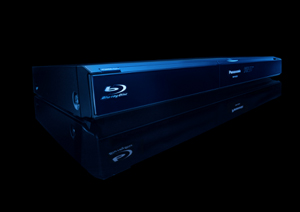Blu-ray vs. HD DVD: new format war’s on
Blu–ray and HD DVD
are waging war. Another sign that technological progress equals shameless power struggle equals money grab. It may sound too cynical, but it also sounds too true.
The proof’s in the pudding. Just as you replaced your beloved VHS movie collection with DVD, big movie companies are telling you that DVD is on its way out. You’ll have to replace your copy of Wizard of Oz all over again. But you just bought that high–definition TV, and now you wanted to see what it really can do. Are you stuck?
Here’s some news, good and bad. The good news is that it’s true that the high–definition successor to DVD is here. Actually, ‘successors’ ? as in plural – is a better term, and that’s the bad news. That’s because there are two formats fighting again for a place in your living room. For those who remember the heyday of VHS and Sony’s Betamax, we’ve got another format war on our hands.
From Toshiba and a consortium of movie and software companies comes HD DVD. And in the other corner, developed by Sony and backed by its own entourage of software and movie moguls, is Blu–ray. That’s Blue without the ‘e’ _ Their marketing gurus must have told them it looks cooler that way. The new medium looks just like DVDs, and – for the most part – works like them, too. And for everyone interested, there is bound to be confusion.
As the name Blu–ray implies, the color blue is a big part of the new formats. Back in 2000, a group of scientists in Japan, lead by Shuji Nakamura, completed work on a Light Emitting Diode (LED) that creates blue light. Now that doesn’t sound like a big deal to many, but it really was a breakthrough. Unlike simple colored light bulbs, LEDs get their colors from the chemicals and minerals they are made of. Until then an LED that created blue light was very hard to make. This discovery then led to the creation of a blue laser, the type that’s found in HD DVD and Blu–ray players.
Whoop–di–doo, you might say, but what does it all mean? Well, CD and DVD lasers are red. And the dot that the red laser made is pretty small. But because of the way that light works, the dot from a blue laser can be much smaller. Data held on a DVD is made up of millions of tiny pits on the disk. The laser shines into these pits as the disk spins, and the changes in reflection make up the digital ones and zeroes that create the movie. So with a blue laser, a smaller laser dot means the pits can be smaller, and smaller pits mean that you can fit more of them on a disk. And more pits mean that HD DVD and Blu–ray can hold up to 10 times more information than DVD. And 10 times more information means much better quality video and sound.
Everything sounds wonderful, and we now live in a carefree high–definition Nirvana. Right? Not so fast, remember that bit earlier about the HD DVD vs. Blu–ray
war? That throws a wrench in the works. You’re excited about high–definition, you want high–definition, but which format do you support? Some might argue ferociously, but the differences between the two are pretty minor, as both have great quality and great sound. Both also have cool features that enhance your movie experience.
Each format has its backers.
- Sony lost the VHS vs. Betamax battle in the early 80’s, and doesn’t want a repeat of that mess. They have put a lot of resources into winning this format war. Blu–ray
technology is found in Sony’s PlayStation 3, and has the support of big movie studios such as Disney, Twentieth Century Fox, and most recently, Warner Brothers. Warner Brothers will continue to release HD DVDs until late May 2008, where they will then be a Blu–ray only studio. Big computer companies like Dell and Apple are also supporters.
- HD DVD
was developed by Toshiba, and its largest supporter is Microsoft. To further its support for HD DVD, Microsoft released an external HD DVD player for its Xbox 360 to compete with Sony’s Blu–ray–equipped PlayStation 3. Paramount and Universal are the two largest movie studios also backing HD DVD. HD DVD also has a lot of ‘A list’ titles on store shelves, and won’t let up easily.
From the sidelines, it looks like Sony has a better foothold in the war with more studios supporting Blu–ray. The idea is that people will choose what player to buy based on what format the movies are available. That’s what won the VHS vs. Betamax battle, and Sony hasn’t forgotten it. But the HD DVD side has countered by drastically lowering prices on its players. A larger number of HD DVD
players in homes might sway the movie studios to the HD DVD camp.
What’s really clear is that we are still a long way from knowing who will be the big winner. There are vocal groups of fans on both sides of the war; crying out the strengths of their format, while slamming the weaknesses of the other. But does there really need to be a winner? Can’t we all just get along? Many players made today can read both formats, and get the best features from both technologies. Heck, DVD drives in home computers have been doing this for years, when there was no clear winner in the DVD–R vs. DVD+R war.
So what’s our advice?
If you already have a high–definition TV and can afford a dual format player, buy it and enjoy the highest quality movie experience you can get in your home today.
To find out more:
Related material on TechnologyTips.com:
Format war: whose side to take?

